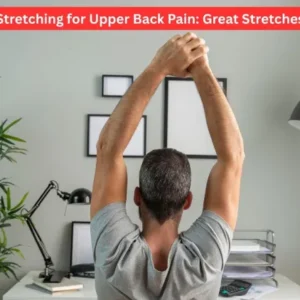Do you feel like the Tin Man who wished to have oil to grease his joints once more? Or perhaps you are like the Cowardly Lion, afraid to move your hip or knee, for instance, due to an injury that has persisted for quite some time. Essentially, there is no wizard at the end of one’s yellow brick road, only something far more inspiring known as Fascial Stretching Therapy (FST™).
If you want to get taller, visit our article about Best Stretches to get taller: A Comprehensive Guide to Growing Taller.
WHAT IS FASCIAL STRETCH THERAPY?
Fascial Stretch Therapy is a concept of assisted stretching based on acting on the fascial and the joints in a specific way. It is done by a certified therapist who employs different methods involving touch and overhead of gentle traction to stretch the deeper layers of tissue. The first helps unblock the fascial, the second releases the nervous system tension in the tissue and the third is achieved by tensing the fascial in the body to produce the required joint space.
It was developed in 1966 by Ann Frederick, a physical therapist, to analyse and exercise the patients’ mobility deficiencies among high-profile athletes. She was able to formulate her method by studying the body as one apparatus based on the findings on fascial, connecting, curvilinear and triangular structures. Thus, it was agreed that employing various techniques such as pulling, swinging, as well as circling would yield the best results.
In the following year later she started working along with her husband, who is a physical therapist, and Chris Frederick. They have been advanced and applied to assist many people who wish to decrease their level of discomfort and have the ability to bend and move. Because of Flagg, Fascial Stretch Therapy is currently taught to other health care professionals: occupational therapists, physical therapists, and massage therapists through the Stretch to Win Institute.
WHAT IS FASCIA?
Fascia is a 3d continuous structural framework for connective tissue that surrounds and penetrates all structures of the human body.
- It connects tendons/ligaments to bones.
- It covers every muscle.
- It suspends the organs in the body.
- It has a rich nervous plexus, which conveys specific sensory messages concerning the amount and intensity of motion to the CNS.
According to Thomas Myers, if there is a muscle that has been split into 600 sections, the body can be visualised in that manner.

FASCIAL ADHESIONS
The sheath’s natural state is to be moist, and its condition is supposed to be seamless and without interruptions. In this case, the movements are free, do not cause pain or limit the effectiveness of the movements, in and out of the joint.
Now, supposing this continuous line of fascial is overstretched or there is some break in it somewhere. This is caused by congestion or stiffness of collagen fibres, especially in the patients’ fascial regions. This causes one to become less mobile, and mobility becomes a slow and painful affair.
Since the fascial is interlocking and still moving in a twisting motion, the restriction is created, which leads to further restrictions down in the chain. During this ripple effect, the fibres do not interconnect or integrate effectively with the other members in the system and do not display coordinated or efficient teamwork.
For instance, it is easy to consider an ankle injury. An ankle injury would reduce the ability to move the hip in all areas, resulting in lower back tightness and aching. Nevertheless, it is beneficial to at least treat the whole line of the fascial or address all parts of the body affected by the fascial network when the point of most strain or injury has been addressed.
WHEN DO FASCIAL ADHESIONS OCCUR?
These include the formation of adhesions in the tight fascial area by injuries, operations, inflammation, repetitive traction, or no traction at all, like in cases of sedentary living, shocked muscles, post-surge,ry among others.
TECHNICAL
Fascial Stretch Therapy is applied on a normal massage table that can be a hydraulic, vacuum or electric, fully lit table, depending on the therapist’s preference. Thus, stabilisation straps, which are similar to Velcro shoes, are used to keep the limbs in the correct position and to have power over them. It enables the patient to be at ease when the therapy is being conducted by the therapist through stretching.

WHAT TO EXPECT?
The patient should wear comfortable, stretchable clothing to the appointment and session, such as leggings, shorts, sweatpants, t-shirts, or tank tops.
The first interview will be aimed at getting some basic information about the client’s injury history, posture and pain, the quality of movements and quality of sleep. You will be required to perform muscle contractions, but your primary activities will significantly entail relaxing and breathing.
Perhaps you are reluctant to take a step, lift your arm, or just wave your shoulders, all because ‘yours is injured and has become rigid?’ Don’t worry. This is a painless treatment. The Fascial Stretch Therapy system operates by skill and not by force. During treatment, the therapist acts in a ‘romantic’ manner to lessen the tension of the nervous system.
One can define the effectiveness of the given movement by stating that a relaxed tissue and a relaxed patient make it easier for the therapist to gain access to the deep space inside the joint.
Thus, you may experience a positive increase in your mobility after this 60 or 90-minute session. Nonetheless, for the best and longest-lasting results on the body, it is advisable to undergo at least 3 Fascial Stretch Therapy sessions. Thereby, follow-up treatments can be done on a routine basis if the patient experiences the recurrence of the above-mentioned symptoms.
WHAT ARE THE PROS OF FASCIAL STRETCH THERAPY?
- Decreased pain
- Increased mobility
- Decreased susceptibility to injury
- Improved posture, circulation and joint health
- Improved physiology, such as sleep, digestion and energy
- Some of the operations that were performed were: correction of structural anomalies, such as leg length differences. Down-regulated nervous system for post-activity recovery, regeneration and lymphatic cleansing.
- Hyping of the nervous system to prepare for pre-exercise activity warm-up, correctives and/or mental/emotional warm-up in training.
WHO CAN BENEFIT FROM FASCIAL STRETCH THERAPY™?
- Patients with chronic back pain: Chronic pain always characterises the back region by pain in muscles and joints, weakness in overall body movements, fear to undertake some activities, and is always related to immobility. The Fascial Stretch Therapy method has been proven to release pain and regain function, so one can regain their daily life.
- Those who exercise regularly: When you exercise, you hope to reap the results with little discomfort, and if not, they should be taken care of easily. Fascial Stretch Therapy enhances the circulation of blood to the muscles, furthering the aching muscles, breaking up which increases exercise workout tempo, and eradicates muscular soreness in a shorter period.
- Those who sit too much: Decreased circulation in the legs leads to various ailments developing. In addition, there was discomfort in the hip, hamstrings, lower back, as well as neck muscle tightness and soreness. Fascial Stretch Therapy enhances the blood flow and massages all the muscles when one is sitting down.
- Patients with degenerative joint disease or arthritis: Despite only slight differences, they are connected and result in a decrease of joint space and the lack of joint movement. If Fascial Stretch Therapy is applied in time, it will prevent the joint from wearing off, hence slowing down the degeneration process.
- The other label is for those people who are in poor condition: The normal period it takes for this to occur can vary, but this is because we stay in poor posture all through the day, bending throughout our torsos. It is a therapeutic form of exercise that helps in the reduction of postural tension due to its ability to restore joint proprioception to normal.
- Those who are active: Everybody who contact with Fascial Stretch Therapy can experience the enhanced speed, increased lifting capability, expanded endurance, better coordination, and enhanced flexibility.
- Those who are healing injuries: Are you trapped again in the “rut” of your rehab? In addition to that, your therapist can maximise your range of motion by releasing adhesions and allowing your body to move in the most natural way possible using Fascial Stretch Therapy.
- Those who are stressed: fight or flight response, racing thoughts, cannot sleep, and constipation? Fascial Stretch Therapy enables you to transition into a parasympathetic state, which is a rest and digestive mode of other activities in the body that leads to relaxation of the muscles and therefore great sleep.
- Who needs help stretching? How far, for how long, how often? That is why using the Fascial Stretch Therapy assessment and the treatment, you can get a great idea of where to focus Veterinary Physical Rehabilitation. Which anatomic joints are limited, and which kind of movement do you have? There is nothing more practical as almost everybody would attest to than to get the feel of things.
- Who doesn’t love a massage? Fascial Stretch Therapy is a somewhat sensitive way of stripping naked, and so on. It is therefore an appropriate method of getting the ease and relaxation of massages without having to engage in any physical activity.
Conclusion
This is the last in the list but can be applied to anyone with a body and looking for improvement in mobility, flexibility and other aspects of their physical activity and sports performance. It is an effective one that can be employed in children, athletes, as well as other persons who are involved in a quite active life. Regardless, whether the person is in the process of rehabilitation after the injury or surgery, has chronic pain, or is trying to improve biomechanics, Fascial Stretch Therapy helps a lot.
But in general, those people who have an active working life or are active trainers, gym goers, or take themselves in rigorous activities usually get the maximum and fastest and directly obvious helping effects. The fact is, their bodies respond more keenly or rather immediately, and as such, the therapy is even more of an enhancement.
Frequently Asked Questions
1. Is Fascial Stretch Therapy painful?
No, FST™ is a spinoff treatment that is free from discomfort or pain to the patient during the treatment period. It implies that a therapist does not oppose the body but uses smooth traction and stretching motions that are gentle and soothing. Still, some of the clients stated that it can also be considered a type of yoga that is accompanied by a massage.
2. What makes FST™ unique compared to what people usually understand is just stretching or even yoga?
However, while performing these exercises, FST™ focuses on the fascia adhesion instead of the muscles, as in normal flexibility. It is done by a specially trained therapist with the help of which the patient’s body is gently taken through a series of movements when he or she is in deep relaxation. It means that by using such a method, the effect can be achieved through the combination of exercise with stretching or yoga rather than by exercising alone.
3. The number of sessions of Fascial Stretch Therapy is not fixed because the number of sessions depends on the health problems of the patients.
You can experience the changes within the first 60 or 90 minutes of the session. Even so, it is advised that an individual should attend at least three classes. For recurring problems, some feedback that has to do with back and joint pains might call for follow-up visits that will maintain mobility and minimise pain.
4. Here is an example of what a typical patient who would benefit from Fascial Stretch Therapy would be like.
FST™ can be applied to any body type, including sportsmen, sedentary workers, old people, patients who are involved in rehabilitating processes or those with wounds and diseases requiring post-surgery treatment. If it is constant pain, Lower Crossed syndrome, or even office worker’s syndrome, or poor posture, and generally wanting to enhance the range of motion, FST™ can help.







